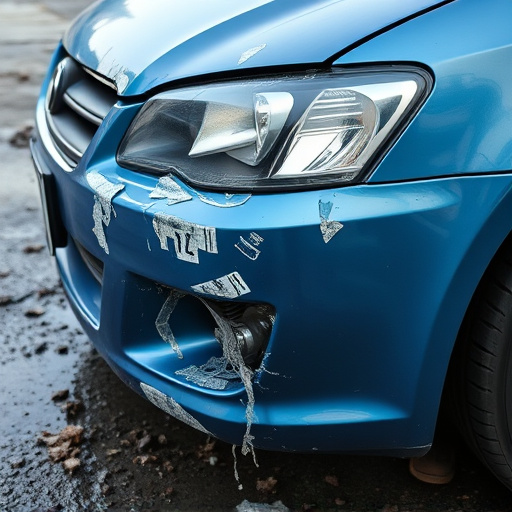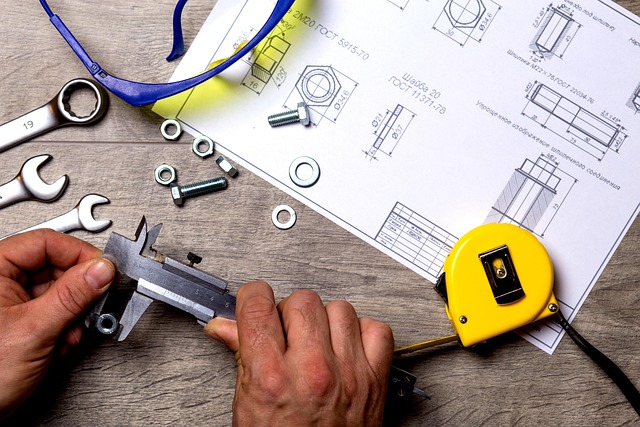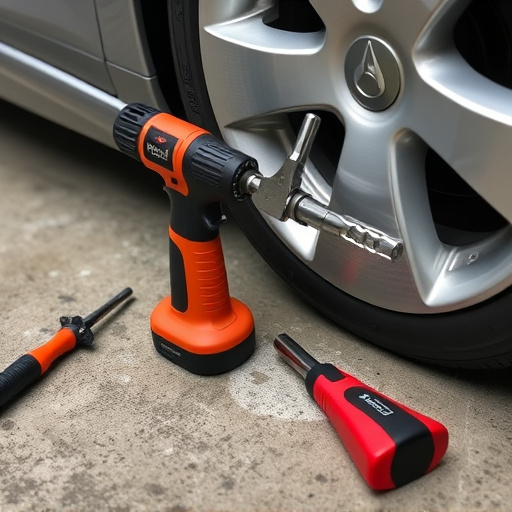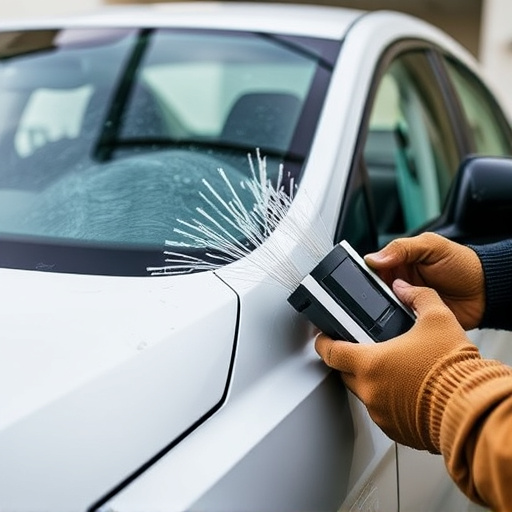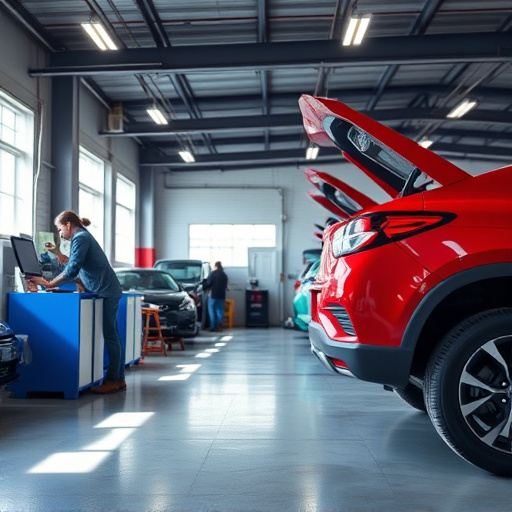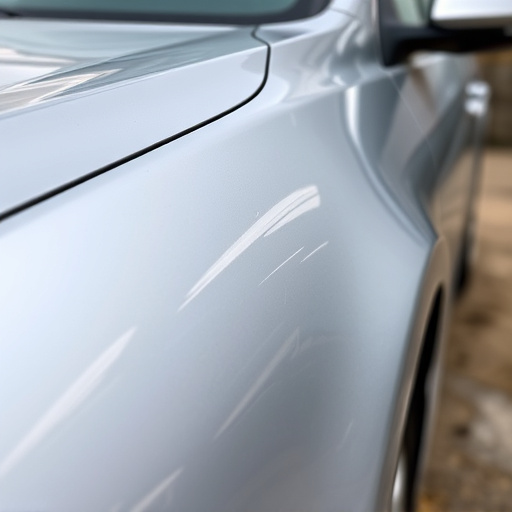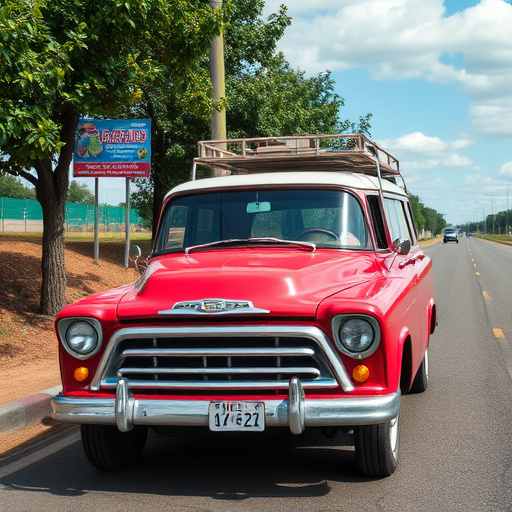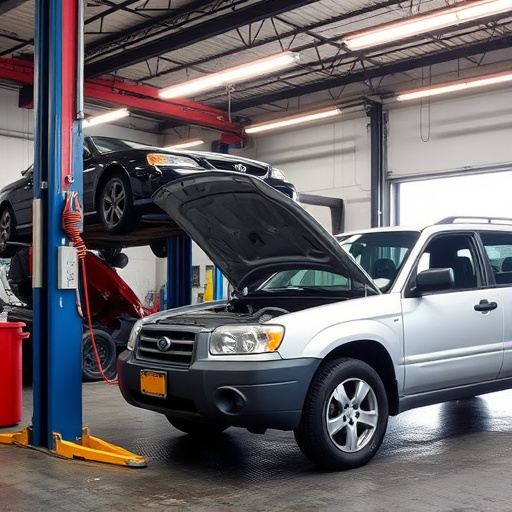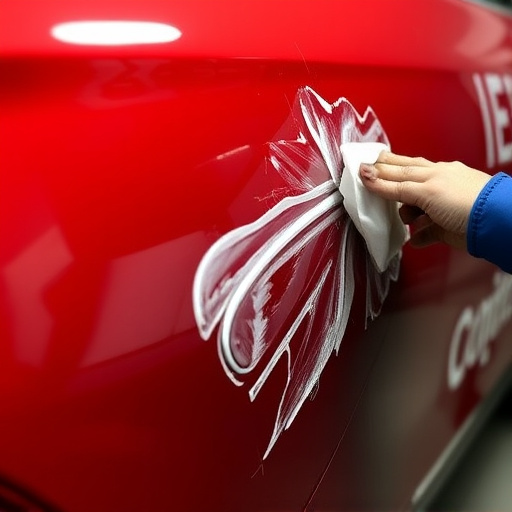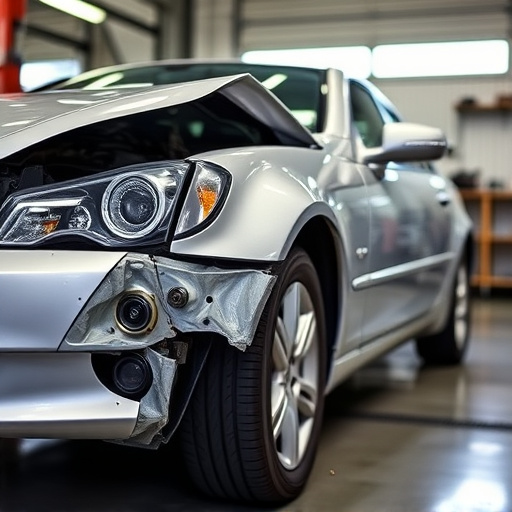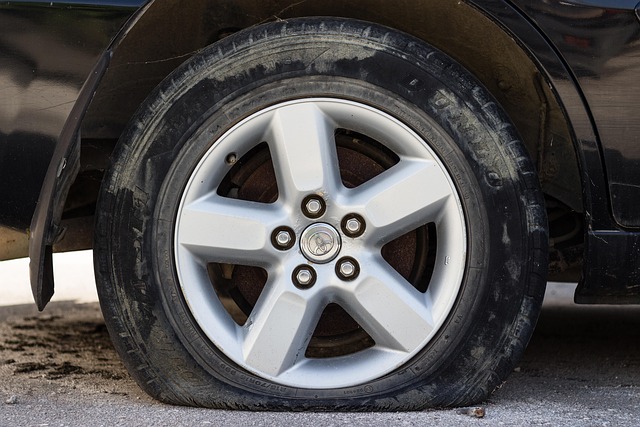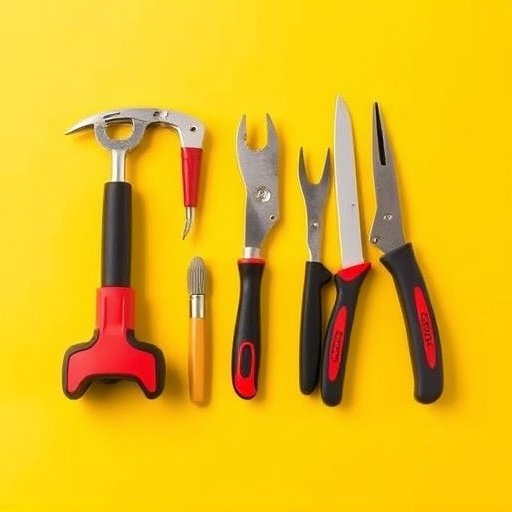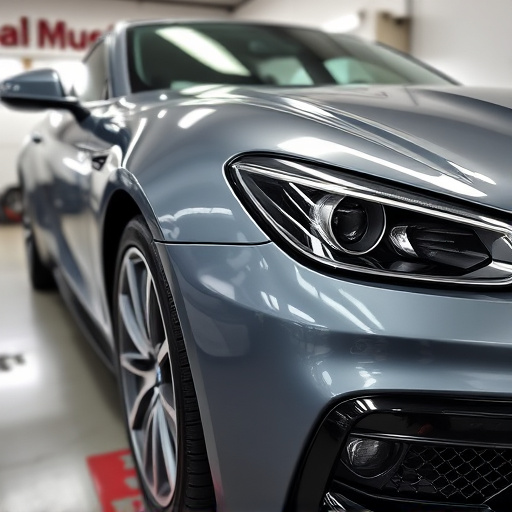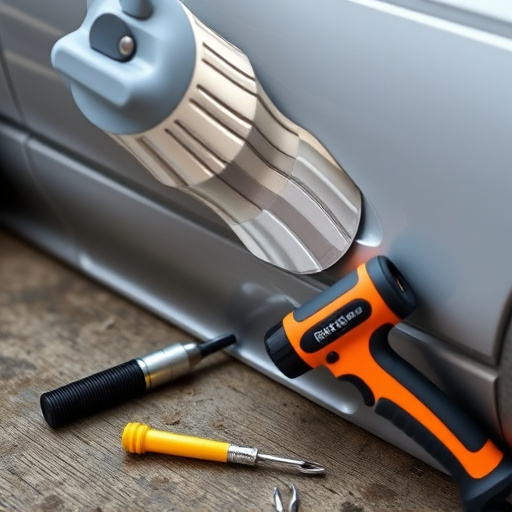Tesla's advanced crumple zone design, vital for occupant protection in accidents, requires meticulous repair. The process begins with a thorough inspection, followed by precise straightening of bent rails and replacement of damaged components with specialized parts. Frame straightening techniques address misalignments, cracks, and dents, while maintaining component clearances for optimal safety. Regular maintenance is crucial for long-term vehicle health and minimizing Tesla crumple zone repair needs.
Tesla vehicles are renowned for their advanced safety features, and a key component is the innovative crumple zone design. In the event of a collision, these zones absorb impact energy, protecting passengers. When damage occurs, especially along longitudinal rails, proper repair is crucial to maintain structural integrity and safety standards. This article explores Tesla crumple zone repair techniques for such incidents, delving into the process, best practices, and ensuring optimal restoration.
- Understanding Tesla's Crumple Zone Design and Its Role in Safety
- The Process of Repairing Longitudinal Rail Damage
- Best Practices and Tips for Effective Crumple Zone Restoration
Understanding Tesla's Crumple Zone Design and Its Role in Safety
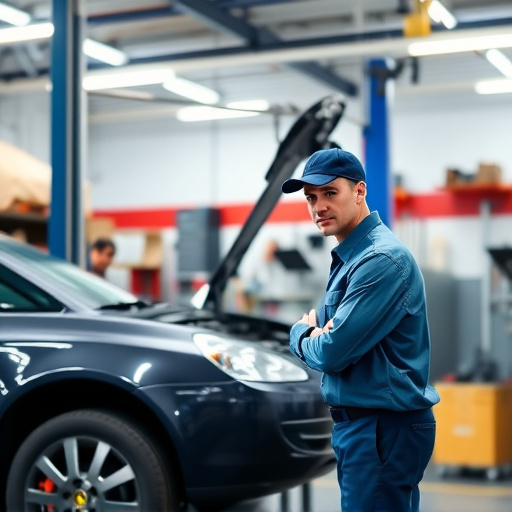
Tesla’s vehicles are renowned for their advanced safety features, and at the heart of this is the crumple zone design. This innovative feature plays a pivotal role in enhancing passenger protection during car collisions, particularly in longitudinal rail or crush events. The crumple zone acts as a buffer zone designed to absorb and distribute the force of impact, minimizing the risk of severe injury to occupants. By allowing the vehicle’s structure to deform strategically, it reduces the transfer of force to the cabin, providing crucial time for safety systems like airbags to deploy effectively.
Understanding how this system works is essential in the context of Tesla crumple zone repair. When a vehicle experiences a collision, the crumple zone is specifically engineered to compress and crumple, protecting the more vital components and passenger compartment. This strategic design allows for what is known as “energy dissipation,” which helps to prevent excessive damage to the car’s body during the collision process. Efficient crumple zone repair, therefore, involves restoring this energy-dissipating feature while ensuring that the vehicle retains its safety standards post-accident.
The Process of Repairing Longitudinal Rail Damage
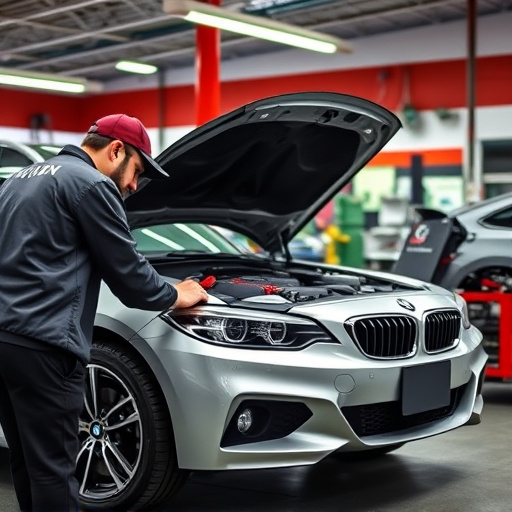
The process of repairing longitudinal rail or crush can damage in a Tesla involves several meticulous steps, ensuring both structural integrity and aesthetic restoration. It begins with a thorough inspection to assess the extent of the damage. Specialized tools are then used to carefully straighten and align the bent rails, addressing any misalignments that could compromise the vehicle’s performance and safety.
Once the rails are correctly aligned, skilled technicians employ advanced techniques for Tesla crumple zone repair. This may include replacing damaged components, such as fenders or body panels, with precision-engineered parts designed to withstand impact energy. The goal is not just to fix the visible damage but also to restore the vehicle’s ability to absorb and distribute crash forces effectively, a critical aspect of both safety and crumple zone functionality. The process culminates in a meticulous paint job to match the vehicle’s original finish, ensuring a seamless blend that respects the vehicle’s aesthetic integrity.
Best Practices and Tips for Effective Crumple Zone Restoration

When undertaking Tesla crumple zone repair, especially for longitudinal rail or crush can damage, adhering to best practices ensures optimal structural integrity and safety. The first step is a thorough inspection to assess the extent of the damage, involving both visual examination and utilizing specialized diagnostic tools. This includes checking for any misalignment in the frame, cracks or dents in the body panels, and ensuring all components like auto glass repair are in good condition.
For effective crumple zone restoration, precise frame straightening techniques are crucial. This involves using advanced equipment to realign the vehicle’s frame to its original specifications, mimicking the manufacturer’s design intent. Throughout the process, careful consideration is given to every detail, from panel alignment to ensuring proper clearances for components like exhaust systems and brake lines. Regular maintenance and prompt attention to any new issues are also key, as they help prevent future damage and ensure car repair services are minimized over the vehicle’s lifespan.
Tesla’s innovative crumple zone design plays a pivotal role in enhancing vehicle safety. When damage occurs, such as longitudinal rail or crush can damage, efficient repair is crucial. Understanding the process and implementing best practices ensures the restored crumple zone maintains its structural integrity and safety standards. By adhering to these guidelines, Tesla owners can effectively manage repairs, preserving both the performance and safety of their vehicles. Remember, when it comes to Tesla crumple zone repair, proper techniques are key to ensuring optimal results.
